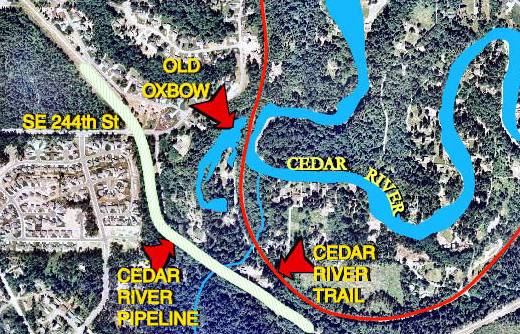Oxbows: ecology and importance
Cedar River Oxbow Wetland 79 Enhancement Project


Once abundant along major river systems, a variety of off-channel habitats -- including adjacent wetlands and side channels -- provided extensive areas of protected habitat for juvenile fish. Oxbows are another form of this habitat type.
An oxbow is an arc or crescent shaped body of water located in an abandoned river channel These are typically formed when the water "takes a short cut" through the narrow "neck" between bends, or meanders, in the river, cutting the oxbow off from the main channel.

At first, and then intermittently -- as either the main channel becomes more established or the oxbow begins to fill in -- there is still a connection to the main river channel. During this time fish move into the oxbow to spawn, find food, avoid predators and find refuge from the high flows in the main river channels. Not only is this type of environment extremely important to the survival of fish, but it also supports a large variety of species including amphibians and birds.
Eventually, the oxbow will be completely cut off from surface flows. And although the river no longer flows into the oxbow, groundwater continues to provide water to support an abundance of life here.

Over time these abandoned channels will naturally fill in with dead leaves and soil that wash in from the surrounding area; the open water components become smaller and unless there is flowing water to keep a channel open it will fill entirely. As these systems evolve, they provide habitat for a wide variety of wildlife which depend on both upland and wetland environments.
In their natural settings, rivers are dynamic systems: river channels move, new channels are formed, side channels and oxbows are formed, become cut off from the main channels, and eventually fill in; with the whole process continually repeating itself. As these areas became settled and developed, however, this cycle is interrupted as the river channels are cut off from the surrounding area and are confined to prevent flooding and so the land can be used for other purposes.

The loss of these areas on the Cedar River and other major river systems is thought to be one of the more significant habitat losses within these systems.
For questions about the Wetland 79 project, please contact Jon Hansen, Senior Ecologist.

 Translate
Translate